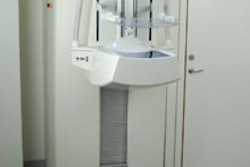CHICAGO - The 90th annual RSNA meeting opened on Sunday with a cautionary note for American radiologists: The technology and globalization that currently allows you to get out of overnight call could also become the undoing of your practice.
That was the message delivered by Dr. James H. Thrall, radiologist in chief at Boston's Massachusetts General Hospital, in his opening session address on "Globalization of Radiology: Myths and Reality."
It was an apt topic for Thrall, who presided over a notably controversial attempt at global radiology recently at MGH. In his RSNA speech, he alluded to that experience with some rueful humor.
"We were doing a proof-of-concept project in Bangalore, India, and suddenly we were on the front page of the New York Times, and every radiology resident in the country thought that I was personally responsible for destroying their career opportunities," Thrall said.
But while the MGH project was killed -- the HIS integration was expensive and no one wanted to relocate to Bangalore, Thrall said in a postspeech interview with AuntMinnie.com -- outsourcing has caught on with many American radiology groups.
And that trend, which Thrall also attempted to quantify in his speech, carries some long-term risks.
"Under the control of radiologists to improve their practices, globalization may be all right," Thrall said. "But other physicians, hospital administrators, or even entrepreneurs may co-opt control of radiology services, if it is proven that outsourcing works too well."
Around 80% of American radiology groups currently use some form of teleradiology, Thrall noted, citing a recently published study (Radiology, April 2004, Vol. 231, pp. 190-197).
However, the use of that technology for outsourcing of radiology reads is much less common. Offshoring of radiology reads to providers outside of the U.S. is even rarer, Thrall said.
"As near as I can tell, about 25% to 30% of groups appear to be using outside teleradiology services to cover off hours," he said. "Looking at interviews with corporate representatives, publications, advertisements on Web sites, it looks to me that about 85% to 90% of outsourced radiology is actually domestic."
That leaves only 10% to 15% going offshore, Thrall noted, "primarily to Australia, Israel, a little bit to Europe, a tiny bit to India."
"Foreign competition is basically a nonissue in the short run," Thrall said, because of the many restrictions on providers of services outside the U.S.
Current services appear to be adhering to the recently issued American College of Radiology (ACR) guidelines, which state that outsourcing should be limited to U.S.-licensed, hospital-credentialed providers with malpractice coverage and, preferably, board certification.
Therefore, most offshore readers will be American citizens who want to work elsewhere, Thrall noted.
"I estimate that right now there are no more than 100 radiologists working abroad with the necessary qualifications, and less than three in India," Thrall said. "There are a total of about 30,000 radiologists in the U.S., so this is a fraction of less than half of 1% of the labor pool."
But while radiology groups can improve their workloads and the quality of their overnight reads by contracting with well-rested, board-certified radiologists in distant locations, there are long-term risks to outsourcing even with domestic providers, Thrall warned.
"I think there's a potential to downgrade the perceived value of the radiologist in the medical community, that radiology may be looked upon as a fungible, contracted commodity," he said. "Groups of radiologists that are willing to subcontract part of their practice may not be regarded with the same esteem."
Also, Thrall said, "if we teach hospital administrations that radiology coverage can be accessed easily through outsourcing, we're going to lose our leverage in negotiating with hospitals."
With offshore outsourcing, there are also greater risks with regard to liability and maintenance of patient confidentiality, he noted.
While Thrall didn't offer any solutions for the dilemmas of globalization, he did advocate the use of "constant vigilance to maintain quality; to really understand who it is on the other end of the teleradiology connection."
"Radiology groups might obsess about the qualifications of a future partner, and agonize over choosing the right person to join their group," he noted. "And yet the same group will turn around and sign a contract with an outsourcing company for radiologists that they've never met and have no concept of commitment or quality about."
By Tracie L.
Thompson
AuntMinnie.com staff writer
November 28, 2004
Related Reading
Legislation looms over offshore teleradiology services, May 27, 2004
ACR bolsters teleradiology statement, May 14, 2004
VRC to open Hawaii reading center, May 11, 2004
Teleradiology providers handle after-hours caseload effectively, May 3, 2004
Overseas teleradiology faces legal hurdles, February 21, 2003
Imaging passage to India sparks outsourcing controversy, January 23, 2003
Copyright © 2004 AuntMinnie.com



















